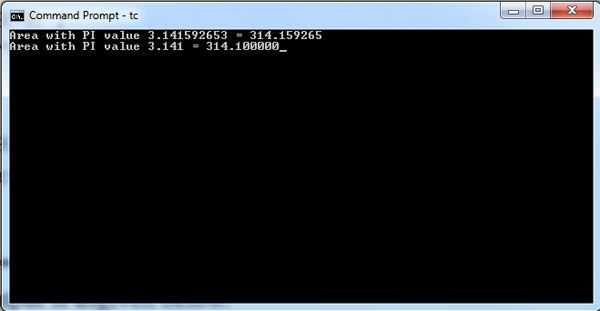The directive #define is used to create symbolic constants and macros (small function type entities). The directive #define may be used in the following manner:
#define Identiiier Repiacement_text
Note that there is no semicolon at the end of line and there is at least one space between define and Identifier, and between Identifier and Replacement_text. During the preprocessor action wherever the identifier occurs in the program listing it is replaced with replacement_ text. For instance:
#define X 7.86
In this code, X is defined to be equal to constant value 7.86. Wherever X occurs in the source code, it is replaced by 7.86. The above expression is in fact equivalent to the following:
canst float X = 7.86;
Once defined as above, the value of X cannot be changed in the program unless X is first undefined to shed the previous value and is then redefined to a new value. The code is written as given below.
#define X 7.86
#undef X
#define X 9.87
Program illustrates the above discussion. PI is defined as equal to 3.141592653 then it is undefined and then redefined as equal to 3.141; area of a circle is calculated using both the values.
#include <stdio.h> #define PI 3.141592653 int main() { int R = 10; double A, B; A = PI*R*R ; printf ("Area with PI value 3.141592653 = %f\n", A); #undef PI // undefines the previous value. #define PI 3.141 B = PI*R*R; printf("Area with PI value 3.141 = %f", B); return 0; }

The output is obvious. The area represented by A is calculated with the defined value of PI =3.14159256 and then PI is undefined to shed its previous value and is redefined to the value 3.141. The area now represented by B is recalculated with PI = 3.141. However, the output is displayed according to the default precision setting in the computer (six digits after the decimal point).
 Dinesh Thakur holds an B.C.A, MCDBA, MCSD certifications. Dinesh authors the hugely popular
Dinesh Thakur holds an B.C.A, MCDBA, MCSD certifications. Dinesh authors the hugely popular